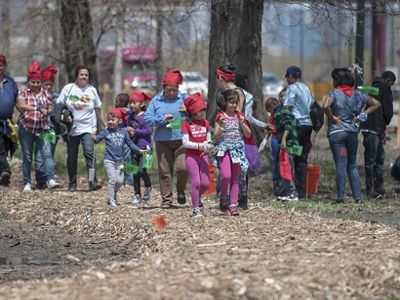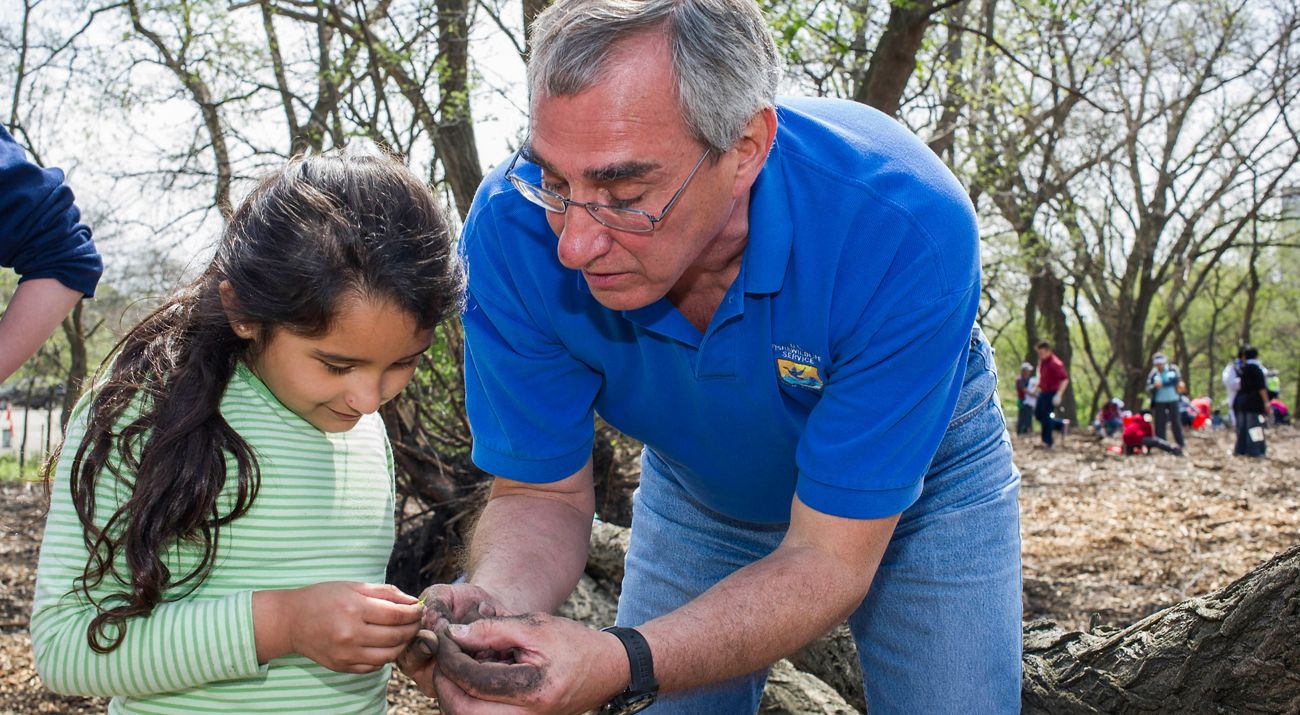Chicago: A City of Stewards
A unique partnership is connecting Chicagoans with nature they can walk to.

Situated improbably where two busy thoroughfares meet on Chicago’s Northwest Side, the land that North Park Village Nature Center occupies has seen a lot. The 46-acre site has been home to a tree nursery and a tuberculosis sanitarium. It’s been sculpted by earthmovers, swallowed by invasive buckthorn, and lovingly revived by generations of volunteers. This rich and sometimes turbulent history is typical of many natural areas in Chicago—in short, the perfect place for Forrest Cortes to get his nature chops.
Forrest spent his youth coming here with his family, volunteering at workdays, going to camp, and getting to know its plants, birds, and its ancient oaks. Now, as an adult, it’s still one of his favorite places. “It’s such a personal connection,” he says. “I can walk through and remember so many different experiences as a camp student there, as a volunteer there.”
As Community Stewardship Program Manager in a unique shared position between the Illinois chapter of The Nature Conservancy and the Chicago Park District, it’s Forrest’s job to engage volunteers in taking care of natural areas like this across Chicago.
While even out-of-towners know famous locales such as Grant Park, many aren’t aware that the Chicago Park District also manages more than 70 natural areas, totaling over 1,700 acres. Historically, these haven’t gotten as much attention as the traditional parks. But the Park District wanted to change that.
At the same time, the Conservancy had strategically turned more toward cities. Although active in habitat restoration efforts outside Chicago for decades, the organization hadn’t focused much inside the city itself. So the Conservancy and the CPD created a shared position to generate more attention for urban natural areas. The move aligns with the Conservancy’s Cities Program, says LaTresse Snead, TNC’s Director of Volunteer Programs and Community Outreach.
“So many of us live in cities today,” she says. “Introducing people to nature where they live is critical to reaching the larger goals of the Conservancy.”
Now two years in, Forrest works with stewards across the city.
“A lot of our stewards have been caring for these spaces since their inception,” he says. “I get a free history lesson every time I spend time with them outside.”
While contractors take care of most maintenance in Chicago parks, stewardship volunteers bring extra time and attention to their wilder, more biodiverse properties.
“You start to get people who become very familiar with the nuances of a site,” he says.
Since Forrest started, TNC has recruited 23 new volunteer stewards and activated 11 new sites in restoration. Not all new stewards come with prior ecological knowledge, but they’re eager to learn. New stewards shadow experienced volunteers and participate in training courses to sharpen their ecological skills. Starting next year, stewards and staff will partner with the Chicago Botanic Garden to conduct rapid botanical inventories of the city’s natural areas that will help measure the project’s impact.
“One of the things that surprised me the most is the interest level from the community,” Forrest says.
The work is attracting a greater diversity of participants, including families.
“We’ve seen a lot of rockstar volunteers that are new to land stewardship.”
He’s most impressed by the new ideas they bring. One new volunteer is creating an online GIS “story map” with stories, quotes, and photos that will allow people to take virtual tours of natural areas.
The 100-acre Burnham Wildlife Corridor along the lakefront is emblematic of the way the program is involving the community in these spaces. It was once just turfgrass, but the Chicago Park District, in collaboration with other partners, has been installing pockets of native prairie and woodland—and art.
Working with community partners in Bronzeville, Pilsen, Little Village, and Chinatown, the Conservancy, Chicago Park District, and The Field Museum are activating these spaces with cultural programming coupled with trail building, native plantings, and invasive species control.
“It sometimes has to start with something that’s a lot more comfortable—like art or music—and then you can work your way up to taking care of a space in the way that conservationists or scientists think about taking care of a space,” he says.
“There’s not a magic bullet. There’s not a formula that works for every natural area across the city,” says Forrest.
“Natural area by natural area, neighborhood by neighborhood, we have to see where people are at right now, and how can we engage them in these spaces that are right by their home.”
